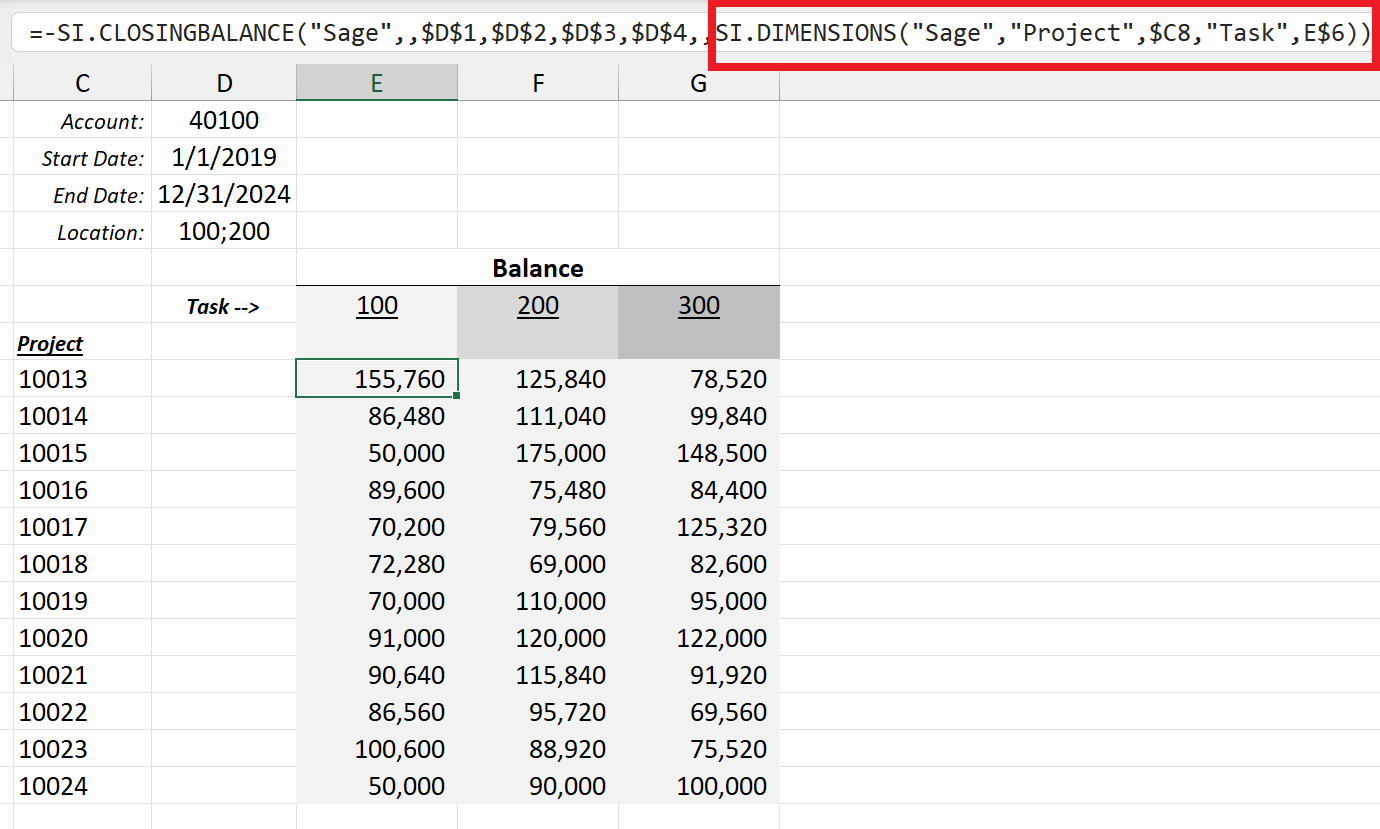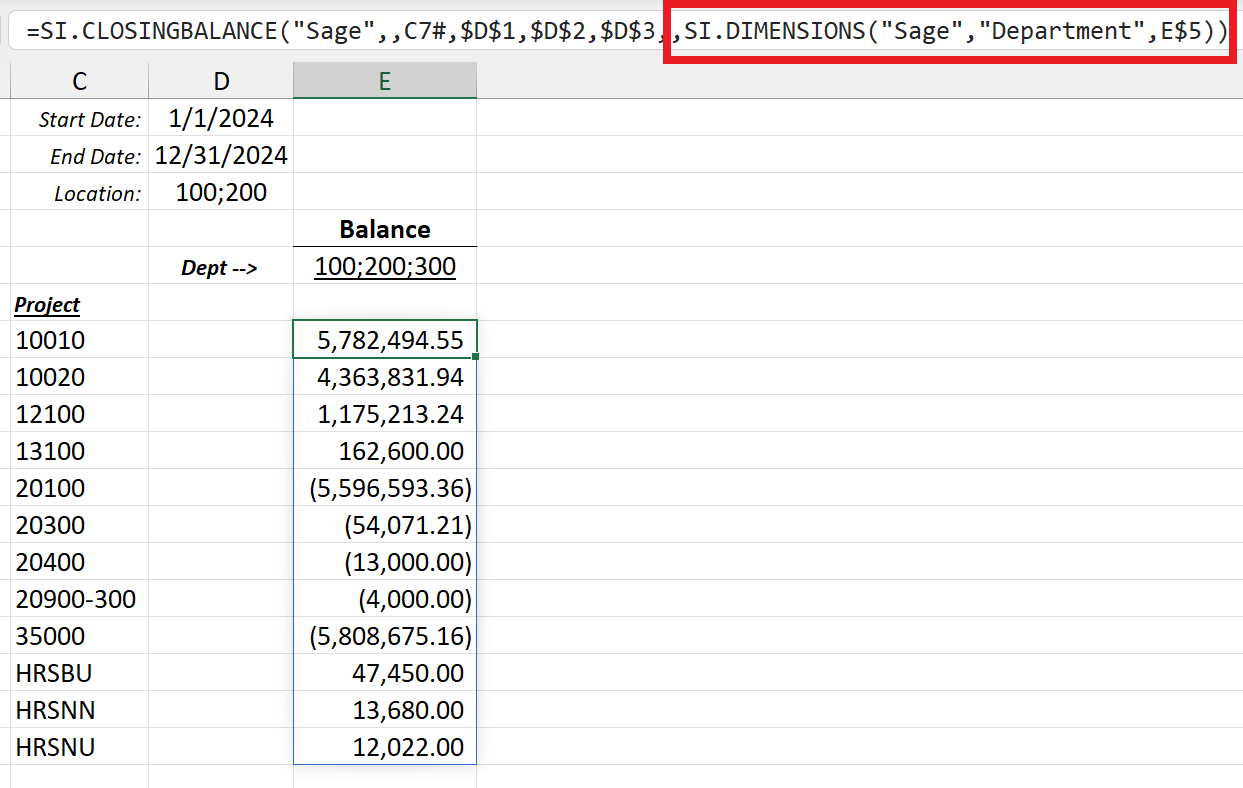SI.DIMENSIONS
Overview
The SI.DIMENSIONS converts a sequence of pairs (DimensionName, DimensionValue) into the matrix format that is usable by certain Velixo functions for Sage Intacct.
Syntax
=SI.DIMENSIONS(
ConnectionName,
DimensionName,
DimensionValue,
[DimensionName],
[DimensionValue]...
[DimensionName],
[DimensionValue])
)Arguments
The SI. DIMENSIONS function uses the following arguments:
Argument | Required/Optional | Description |
| Required | The name of the connection, as specified in the Connection Manager |
| Required | The name of the Dimension being used. |
| Required | The value being applied to the DimensionName |
| Optional | The next Dimension being used |
| Optional | The value being applied to the next |
... | ... |
|
| Optional | The last Dimension being used. |
| Optional | The value being applied to the last |
Examples
Example 1 - single dimension
Here is an example of the SI.DIMENSIONS function being used to provide the Dimensions argument to the SI.TURNOVER function:
=SI.TURNOVER(
"Sage",
,
"10010",
"2019-12-01",
"2019-12-31",
"*",
SI.DIMENSIONS(
"Sage",
"Department",
"200"
)
)
In this case, the SI.DIMENSIONS function is creating the necessary matrix composed of the Department dimension and the value to be used (200)
Example 2 - multiple different dimensions
Here is an example of the SI.DIMENSIONS function being used to provide the PROJECT and TASK dimensions to the SI.CLOSINGBALANCE function:

Example 3 - multiple values for a single dimension
Here is an example of the SI.DIMENSIONS function being used to provide multiple values for the Department dimension to the SI.CLOSINGBALANCE function:

Example 4 - cell references for both dimensions and values
Here is an example of the SI.DIMENSIONS function being used to provide the Dimensions argument to the SI.BUDGETTURNOVER function:

In this case, the SI.DIMENSIONS function is creating the necessary matrix composed of the Project and Task dimensions and the values to be applied to each.
As described in , it is possible to also reference a N:N matrix with a similar same Name and Value structure.
Considering the above example, SI.DIMENSIONS(J2,K2,J4,K4) can be replaced by a simple reference to J2:K3 (after removing the bank row between the two filled rows)
